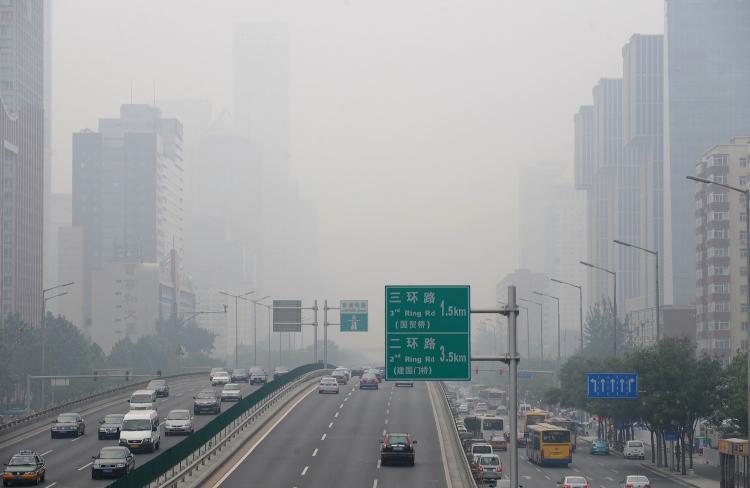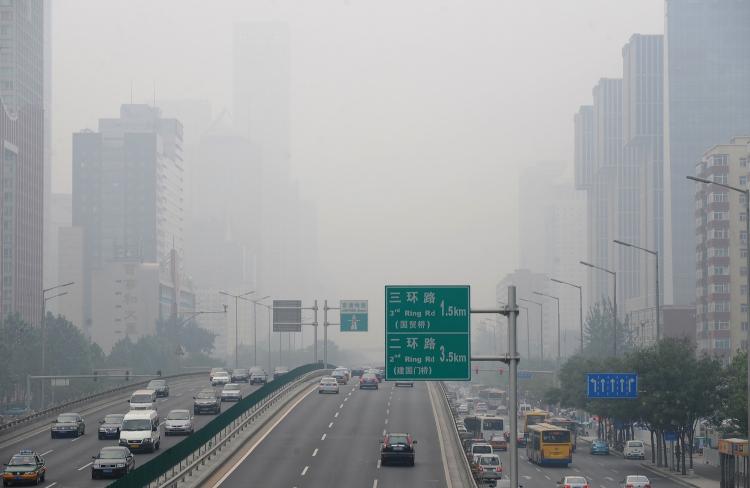The U.S. Embassy released eight air quality reports during the night of Dec. 21 to 22 which had values that can only be characterized as “dangerous beyond belief.” And this past Tuesday, the Ministry of Environmental Protection’s director, Zhou Shengxian, admitted via video conference that more than 30 percent of China’s urban population lives in areas with poor air quality, and that pollution is especially bad in the concentrated industrial regions between Beijing and Shanghai.
The Air Pollution Index (API) is a value between 0 and 500, the higher the value, the worse the air quality. During the 24 hours from 5 pm on Tuesday (Dec. 21), eight API values over 500 were registered at the Embassy. When the API is over 100, the air is considered unhealthy and harmful.
The U.S. Embassy in Beijing has been independently monitoring the air quality and publishing the API on an hourly basis on Twitter. On Nov. 19, the U.S. Embassy noticed that the API exceeded the highest index value – 500. Based on the American standard, such poor quality is harmful to everyone regardless of health condition. When this high API value first appeared, the U.S. Embassy ran out of conventional descriptors. So, they used “insanely bad” at the beginning. Later it was replaced by “exceeds highest index reading”. From Dec. 22 on, one third of the API values were at this level.
The “Major pollutants emission reduction verification video conference” was held the same week in Beijing. The director of the Ministry of Environmental Protection, Zhou Shengxian, said that the air quality in 30 percent of the cities does not meet the standard. The heavy industrial areas between Beijing and Shanghai have already become one of the most severely polluted areas in the world. Hazardous pollutants, such as nitrogen dioxide, dust-haze and photochemical smog, are on the rise.
The Ministry used to publish the name of cities with the highest API values. Yet those listed usually did not include any major metropolitan areas; for example, cities like Linfen, Yangquan, Datong, Jinchang, Yibin, Zhuzhou, Chongqing, Jiaozuo, Changzhi and Panzhihua were often on the list. Big cities like Beijing and Shanghai are never placed on the 10-worst-list. However, the Wall Street Journal’s World’s 10 Most Polluted Cities list in 2010 includes four Chinese cities. Beijing and New Deli, India tied as the worst. Chongqing, Guangzhou and Hong Kong are ranked 7th, 8th and 9th.
Using the director’s claim that 30 percent of China’s urban population suffers under an unhealthy air quality, and adding up the populations of the 10 biggest cities in China, there are 14 million people suffering from hazardous air pollution.
Read the original Chinese article.
The Air Pollution Index (API) is a value between 0 and 500, the higher the value, the worse the air quality. During the 24 hours from 5 pm on Tuesday (Dec. 21), eight API values over 500 were registered at the Embassy. When the API is over 100, the air is considered unhealthy and harmful.
The U.S. Embassy in Beijing has been independently monitoring the air quality and publishing the API on an hourly basis on Twitter. On Nov. 19, the U.S. Embassy noticed that the API exceeded the highest index value – 500. Based on the American standard, such poor quality is harmful to everyone regardless of health condition. When this high API value first appeared, the U.S. Embassy ran out of conventional descriptors. So, they used “insanely bad” at the beginning. Later it was replaced by “exceeds highest index reading”. From Dec. 22 on, one third of the API values were at this level.
The “Major pollutants emission reduction verification video conference” was held the same week in Beijing. The director of the Ministry of Environmental Protection, Zhou Shengxian, said that the air quality in 30 percent of the cities does not meet the standard. The heavy industrial areas between Beijing and Shanghai have already become one of the most severely polluted areas in the world. Hazardous pollutants, such as nitrogen dioxide, dust-haze and photochemical smog, are on the rise.
The Ministry used to publish the name of cities with the highest API values. Yet those listed usually did not include any major metropolitan areas; for example, cities like Linfen, Yangquan, Datong, Jinchang, Yibin, Zhuzhou, Chongqing, Jiaozuo, Changzhi and Panzhihua were often on the list. Big cities like Beijing and Shanghai are never placed on the 10-worst-list. However, the Wall Street Journal’s World’s 10 Most Polluted Cities list in 2010 includes four Chinese cities. Beijing and New Deli, India tied as the worst. Chongqing, Guangzhou and Hong Kong are ranked 7th, 8th and 9th.
Using the director’s claim that 30 percent of China’s urban population suffers under an unhealthy air quality, and adding up the populations of the 10 biggest cities in China, there are 14 million people suffering from hazardous air pollution.
Read the original Chinese article.


